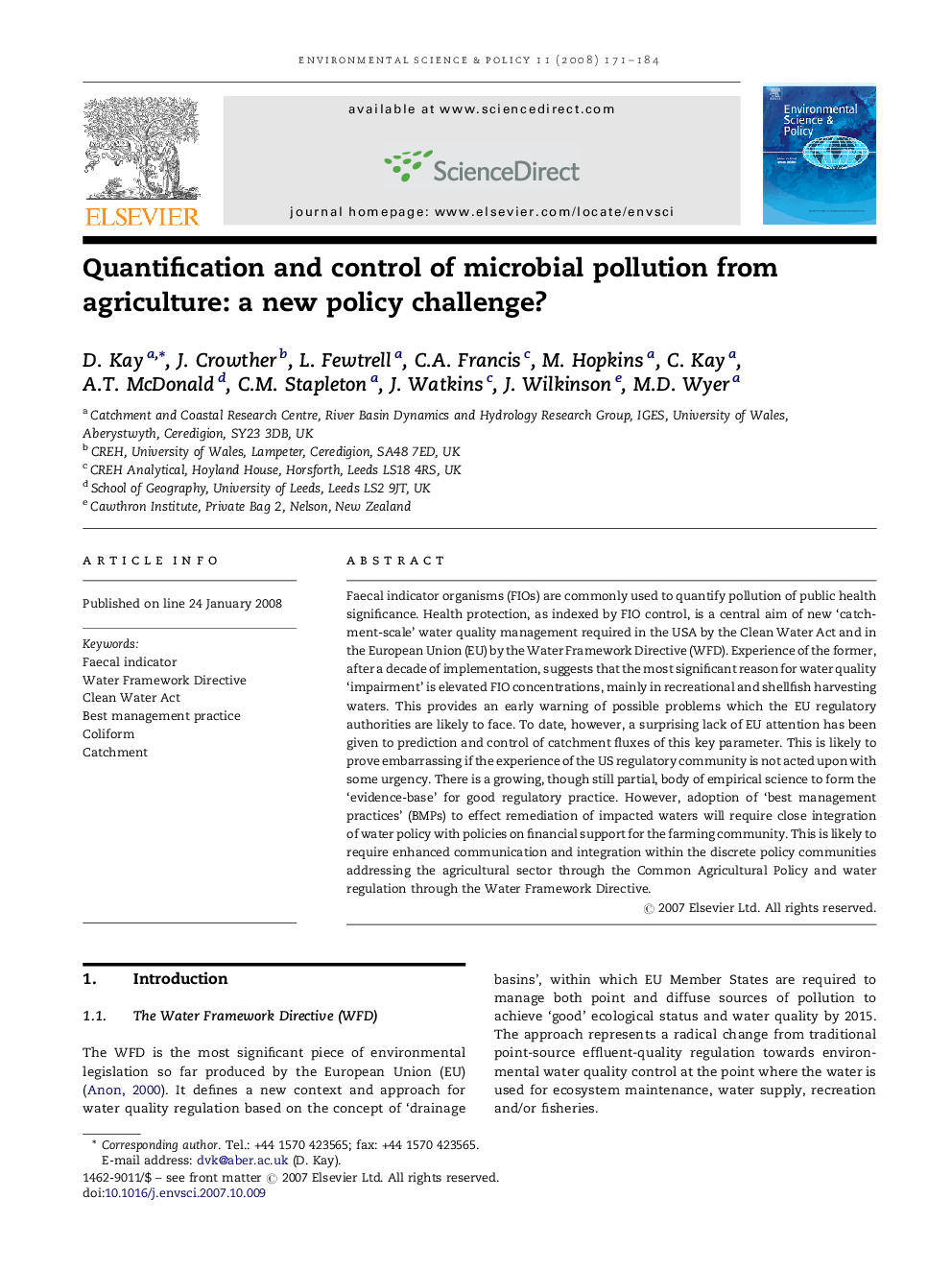| Article ID | Journal | Published Year | Pages | File Type |
|---|---|---|---|---|
| 1054319 | Environmental Science & Policy | 2008 | 14 Pages |
Faecal indicator organisms (FIOs) are commonly used to quantify pollution of public health significance. Health protection, as indexed by FIO control, is a central aim of new ‘catchment-scale’ water quality management required in the USA by the Clean Water Act and in the European Union (EU) by the Water Framework Directive (WFD). Experience of the former, after a decade of implementation, suggests that the most significant reason for water quality ‘impairment’ is elevated FIO concentrations, mainly in recreational and shellfish harvesting waters. This provides an early warning of possible problems which the EU regulatory authorities are likely to face. To date, however, a surprising lack of EU attention has been given to prediction and control of catchment fluxes of this key parameter. This is likely to prove embarrassing if the experience of the US regulatory community is not acted upon with some urgency. There is a growing, though still partial, body of empirical science to form the ‘evidence-base’ for good regulatory practice. However, adoption of ‘best management practices’ (BMPs) to effect remediation of impacted waters will require close integration of water policy with policies on financial support for the farming community. This is likely to require enhanced communication and integration within the discrete policy communities addressing the agricultural sector through the Common Agricultural Policy and water regulation through the Water Framework Directive.
